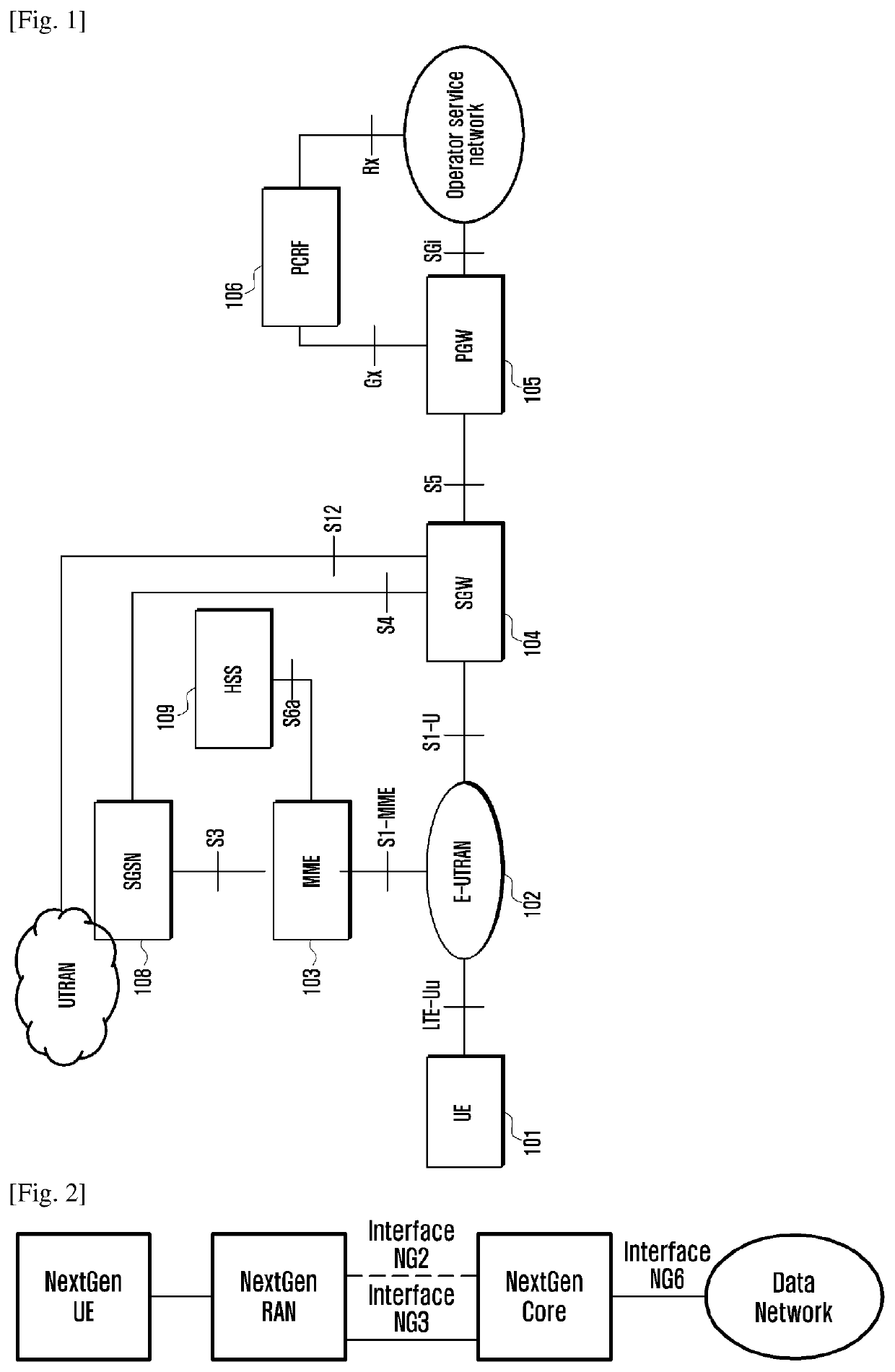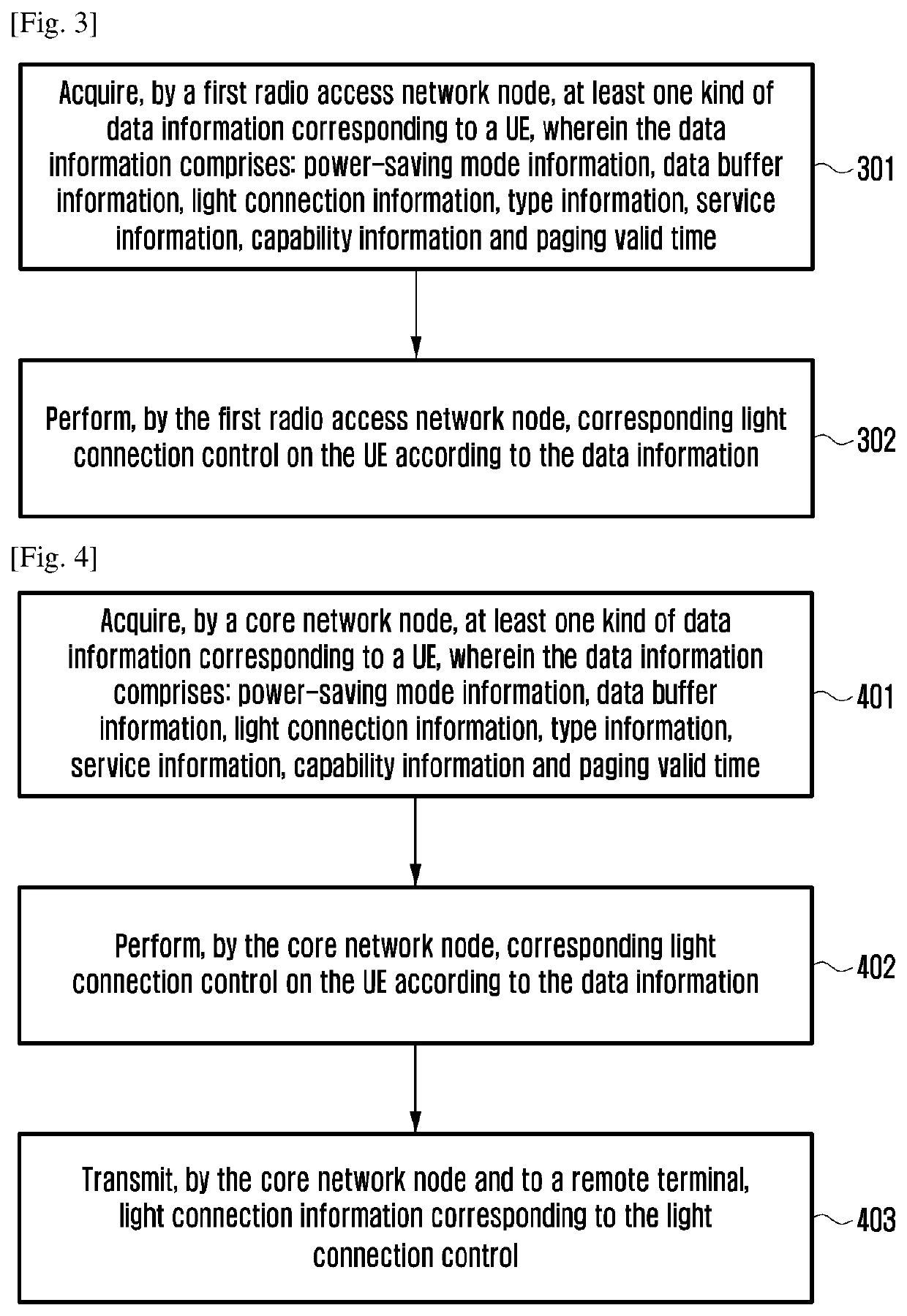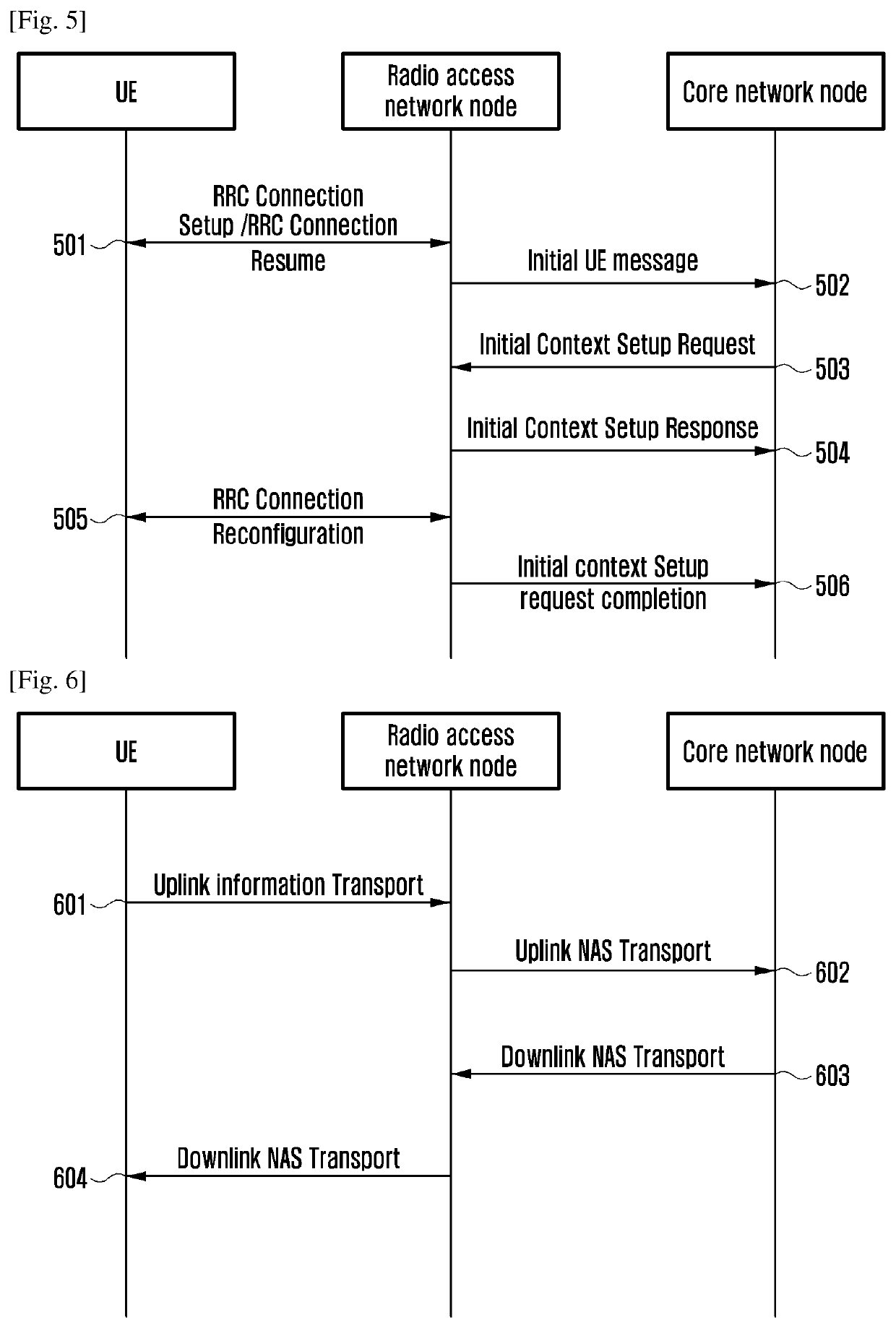Method for performing light connection control on user equipment and corresponding equipment
a technology for user equipment and control equipment, applied in the field of radio communication, can solve the problems of far greater signaling overhead caused by establishing and releasing a connection, and achieve the effects of saving signaling overhead, reducing signaling overhead, and increasing signaling overhead
- Summary
- Abstract
- Description
- Claims
- Application Information
AI Technical Summary
Benefits of technology
Problems solved by technology
Method used
Image
Examples
embodiment 1
[0183]FIG. 5 shows a flowchart of a method for performing light connection control on a UE according to Embodiment 1 of the present invention. Specifically, this embodiment is applied in a procedure of establishing or resuming the connection of the UE to the network. This embodiment embodies, on one hand, implementations of performing paging control, data buffer control and light connection control by a radio access network node, and on the other hand, implementations of performing light connection control by a core network node. As shown in FIG. 5, the method comprises the following steps.
[0184]Step 501: A Radio Resource Control (RRC) connection between a UE and a first radio access network node is established or resumed.
[0185]Optionally, an RRC connection setup request message or an RRC connection resume request message can contain data information corresponding to the UE, wherein the data information can comprise at least one of the following: power-saving mode information, data ...
embodiment 2
[0200]FIG. 6 shows a flowchart of a method for performing light connection control on a UE according to Embodiment 2 of the present invention. Specifically, Embodiment 2 is applied in a procedure of triggering a Tracking Area (TA) update by a UE when the UE is connected to the network. This embodiment embodies, on one hand, implementations of performing paging control, data buffer control and light connection control by a radio access network node, and on the other hand, implementations of performing light connection control by a core network node. As shown in FIG. 6, the method comprises the following steps.
[0201]Step 601: A UE transmits an uplink information transport message to a first radio access network node.
[0202]Optionally, the uplink information transport message can contain data information corresponding to the UE, wherein the data information can comprise at least one of the following: power-saving mode information, data buffer information, light connection information, t...
embodiment 3
[0216]FIG. 7 shows a flowchart of a method for performing light connection control on a UE according to Embodiment 3 of the present invention. Specifically, Embodiment 3 is applied in a procedure of establishing a UE bearer. This embodiment embodies, on one hand, implementations of performing paging control, data buffer control and light connection control by a radio access network node, and on the other hand, implementations of performing light connection control by a core network node. As shown in FIG. 7, the method comprises the following steps.
[0217]Step 701: A core network control node transmits an Evolved Radio Access Bearer (E-RAB) setup request or modification request message to a first radio access network node.
[0218]Optionally, when the core network control node decides that the power-saving mode can be performed on a UE, the core network control node can transmit the power-saving mode information for the UE to the first radio access network node by the E-RAB setup request...
PUM
 Login to View More
Login to View More Abstract
Description
Claims
Application Information
 Login to View More
Login to View More - R&D
- Intellectual Property
- Life Sciences
- Materials
- Tech Scout
- Unparalleled Data Quality
- Higher Quality Content
- 60% Fewer Hallucinations
Browse by: Latest US Patents, China's latest patents, Technical Efficacy Thesaurus, Application Domain, Technology Topic, Popular Technical Reports.
© 2025 PatSnap. All rights reserved.Legal|Privacy policy|Modern Slavery Act Transparency Statement|Sitemap|About US| Contact US: help@patsnap.com



